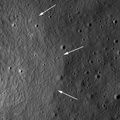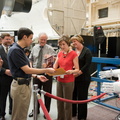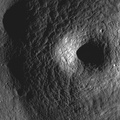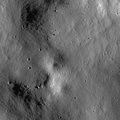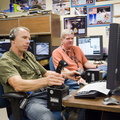
WIKIARCHIVES.SPACE
The Human Spaceflight Archive

Most of the craters on the Moon formed through impact processes. However, some craters, like the one visible in this portion of LROC NAC frame M131488521R, may be a volcano summit pit crater. Crater diameter is ~400 meters, or ~1312 feet, the image width is 923 meters, or 3028 feet, and illumination is from the right.
Information
- Taken in
- Author
- NASA/GSFC/Arizona State University
- Description
-
Most of the craters on the Moon formed through impact processes. However, some craters, like the one visible in this portion of LROC NAC frame M131488521R, may be a volcano summit pit crater. Crater diameter is ~400 meters, or ~1312 feet, the image width is 923 meters, or 3028 feet, and illumination is from the right.
NASA's Goddard Space Flight Center built and manages the mission for the Exploration Systems Mission Directorate at NASA Headquarters in Washington. The Lunar Reconnaissance Orbiter Camera was designed to acquire data for landing site certification and to conduct polar illumination studies and global mapping. Operated by Arizona State University, LROC consists of a pair of narrow-angle cameras (NAC) and a single wide-angle camera (WAC). The mission is expected to return over 70 terabytes of image data.
- Created on
- Tuesday 10 August 2010
- Albums
- US SPACE PROGRAM / PROBES / MOON / LRO/LCROSS / Mission Photos (Edited)
- Source link
- https://photojournal.jpl.nasa.gov
- Visits
- 18
- Rating score
- no rate
- Rate this photo
- License
- Public Domain
- Modified by WikiArchives
- No (original)
- Downloads
- 0
Powered by Piwigo
